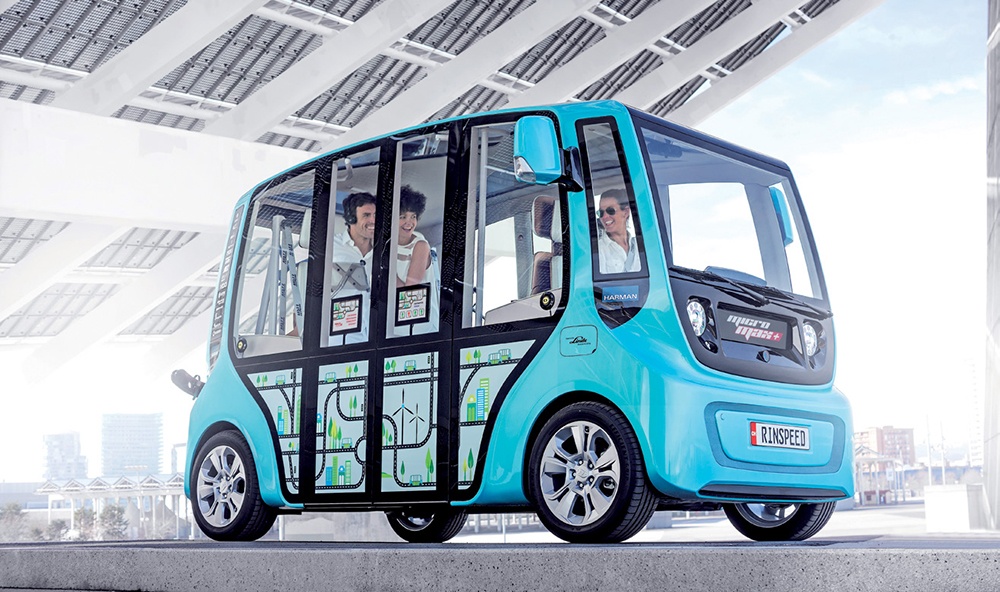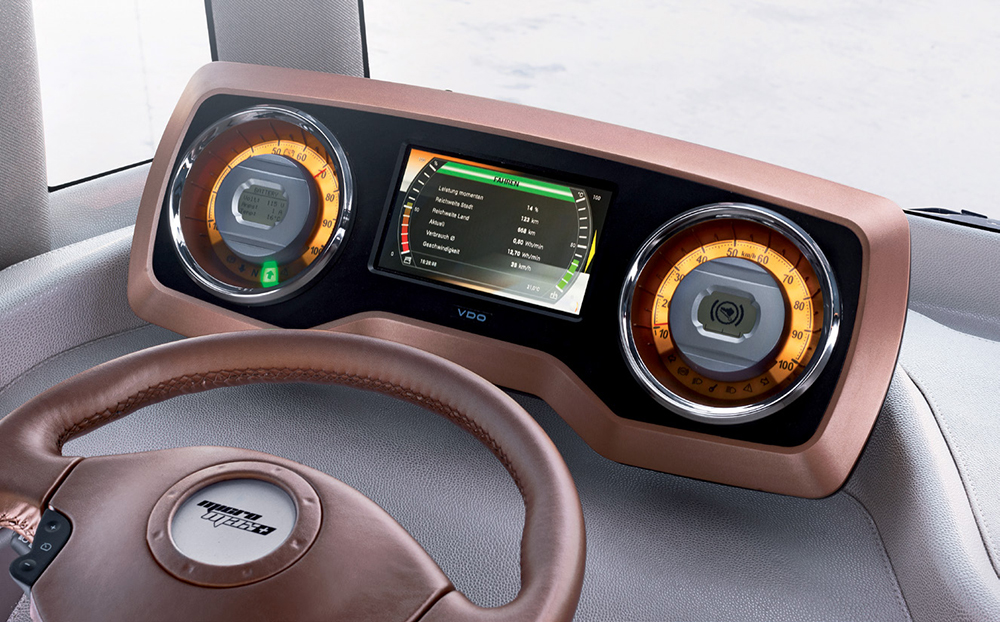Android: the future heart of automobiles
Having developed the core libraries for Android, Noser Engineering is now introducing Android to the automotive industry. Trend-setting projects have already been implemented with Mercedes AMG and Rinspeed.
 The concept car MicroMAX: a smartphone app on wheels. (Source Noser Engineering)
The concept car MicroMAX: a smartphone app on wheels. (Source Noser Engineering)
Cars have long become computerized, although drivers are not really aware of that most of the time. Maybe because cars are still largely isolated from the internet and even the cockpit often still looks like it always did in contrast to what lies underneath. The changes now under way can no longer be overlooked. Two years ago, Noser Engineering ported Android for the first time into a motor vehicle as a core component, developing the world’s first Android-based automotive infotainment system for serial production at Mercedes AMG. The second step followed in 2013: Noser developed an Android-based cockpit for the Rinspeed concept car micro- MAX which was presented at the 2013 Geneva Motor Show. The microMAX is often described as a smartphone app on wheels. But in fact, it is a short-distance vehicle that cleverly combines public and private transportation. It can serve as a microbus to transport ride-sharing groups on regular routes, or take on-the-spot passengers from A to B. Use of the microMAX is coordinated by app and smartphone.
Touch dashboard with Android
In the microMAX, mobile phone technology is not just used to find a suitable ride. It is an integral part of the vehicle itself. The dashboard consists of classic dials supplemented by an intelligent Android display in the center. Continental Automotive Switzerland supplied the hardware, while Noser Engineering developed the application. The touch display provides added value for drivers with its configurable screens and presents data based on everything from vehicular situational awareness to online traffic data and other resources. After the project was initiated in November 2012, the fully operational product was presented at the Geneva Motor Show in February 2013.
Noser Engineering benefited from two key advantages: In the first place Noser had already taken part in developing Android, having been commissioned by Google to create the key core Android libraries. Secondly, Noser was already experienced in automotive Android. As already mentioned, the company developed the world’s first series-production Android-based automotive infotainment system for Mercedes AMG.
AMG Performance Media (APM), as this system is called, presents multimedia, internet and telematics data to the driver and passengers. Special attention was devoted to the racing function. Drivers who enjoy a lap on a race track can use it to measure their round and sector times and to record vehicle data such as lateral and longitudinal acceleration as well as the position of their gas and brake pedal for subsequent evaluation. Th analysis delivers precise correlations between data such as the steering angle or brake pressure and the position of the vehicle on the track. The system can even be used to design individual race courses. APM was launched on the market and Android was ported to the AMG hardware and optimized. The user interface was customized, so that the product no longer seems like Android, but offers a real AMG feel.
 The dashboard consists of classic dials supplemented by an intelligent Android display in the center. (Source Noser Engineering)
The dashboard consists of classic dials supplemented by an intelligent Android display in the center. (Source Noser Engineering)
No license costs
MicroMAX, on the other hand, does show its Android roots. Intentionally so, because Noser Engineering regards the platform as the real killer feature. It simply made sense to ensure it attracts more attention. Android now has an established market of millions of users who are quite familiar with its look. In addition, it is the only one of the current mobile operating systems which displays characteristics that are essential for automotive applications.
Automotive manufacturing is driven by large volumes and high quality requirements and therefore prefers low or zero license fees. Android offers the advantage of being open source. Automotive manufacturers are also very interested in unlimited customization options, for example as regards the connection of sensors and actuators or the design of branded user interfaces. Android is easy to adapt to a specific brand, and updates can be created as desired or needed. In addition the operating system is now mature enough to be trusted by the very safety-oriented automotive industry.
Another advantage of Android is that new features can be added by updates even after the car has been produced. This enables a swift response to market demand or competition and makes outsourcing certain developments possible. There is an analogy here to the tuning community whose enthusiasts have always kept developing their cars, if only in small groups. That option expands dramatically once modifications to a car can be made by app. This, incidentally, is why it is also a good thing that safety relevant areas of Android can be closed off.
Going forward
Noser Engineering is already considering future innovations. The company regards networking the car, driver and cloud via smartphone as the next evolutionary step. Imagine the car becoming an active assistant for the driver, for example in appointment-keeping. Connected to an online diary, the car can plan a route to the destination, taking into account both the gasoline level and the current traffic situation. And, if a delay is imminent, it could notify the relevant people automatically. “We have not gone quite that far this time, but we have concepts like that in our drawer,” says Daniel Bruengger, Head of Automotive at Noser. Where things will go next is as yet open. But the response in Geneva was tremendous, and the two implementations discussed here have proven that Android is likely to play a major role in shaping the future within the automotive industry.